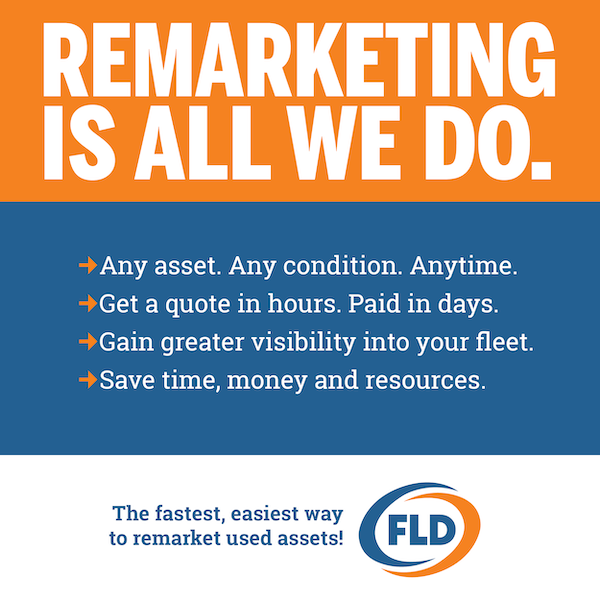
Most fleet decision-makers have little unaided recall of telematics brands, according to new data from Escalent, a top data analytics and advisory firm. Although the “big four” telematics providers, OnStar Business Solutions, Verizon Connect, AT&T Fleet Complete and Ford Pro, dominate upper funnel awareness—likely due in part to their legacy of established relationships in the sector as telecommunication providers and vehicle manufacturers—fewer than one-fifth of fleet leaders could spontaneously name these brands when asked.
Among dedicated telematics service providers (TSPs), unaided awareness is even lower. Geotab comes in third place of providers recalled on first mention, garnering 5% of responses. This underscores the opportunity for telematics brands to distinguish themselves in a competitive environment of commoditized solutions.
 These are among the findings of Escalent’s Fleet Advisory Hub™, a leading insights program designed to explore the needs, expectations and emotions of commercial vehicle and fleet decision-makers. Drawing on input from 1,000 fleet decision-makers, the Telematics Path to Purchase report sheds light on the intricate process of shopping for and acquiring telematics solutions, and decision-makers’ perspectives on the telematics solution market.
These are among the findings of Escalent’s Fleet Advisory Hub™, a leading insights program designed to explore the needs, expectations and emotions of commercial vehicle and fleet decision-makers. Drawing on input from 1,000 fleet decision-makers, the Telematics Path to Purchase report sheds light on the intricate process of shopping for and acquiring telematics solutions, and decision-makers’ perspectives on the telematics solution market.
While Ford Pro and Verizon Connect lead in initial recall, with 10% and 9% of stakeholders respectively naming them first, familiarity—which includes decision-makers knowing a fair amount about, having shopped for, and/or having hands-on experience—with the brands is lower than 60%, even when presented with a list of brand names. Further, fewer than 40% are familiar with the dedicated TSPs, including TomTom, Geotab, NexTraq, Omnitracs, MiX Telematics and Trimble. Even larger fleets operating more than 50 vehicles report lower-than-expected familiarity levels with the brands. To establish their leadership, telematics providers need to do more to differentiate themselves from competitors, tailoring their marketing and messaging to customers’ pain points and priorities.
 “The telematics industry, despite being in existence for over a decade, remains firmly in the ‘early market’ phase and needs to expand beyond early adopters,” said Lucas Lowden, insights consultant and program lead of the Fleet Advisory Hub at Escalent. “While larger fleets have driven initial adoption, the market is gradually shifting toward smaller fleets and mixed fleet businesses. With relatively low up-front costs compared with other investments, telematics solutions offer a practical testing ground for fleets, with many opting for several service providers to diversify their risk and decide which solutions work best for their unique business use case.”
“The telematics industry, despite being in existence for over a decade, remains firmly in the ‘early market’ phase and needs to expand beyond early adopters,” said Lucas Lowden, insights consultant and program lead of the Fleet Advisory Hub at Escalent. “While larger fleets have driven initial adoption, the market is gradually shifting toward smaller fleets and mixed fleet businesses. With relatively low up-front costs compared with other investments, telematics solutions offer a practical testing ground for fleets, with many opting for several service providers to diversify their risk and decide which solutions work best for their unique business use case.”
The study found 85% of fleet leaders saying this is or will be the first integration of telematics solutions into the business. Additionally, whereas risk-tolerant, first-mover adopters say their telematics shopping experience lasted an average of eight months, “next up” shoppers say they’ve already been in the market for telematics solutions for an average of seven months and expect to take roughly nine more months to make their purchase decision. While this indicates the commercial vehicle and fleet market is proceeding through the early adopter phase of telematics solutions, it is also underscoring the need for telematics brands to distinguish their offerings and value propositions to make it easier for fleet leaders to determine more quickly which telematics solutions will be best for their business.
 When deciding on a telematics service provider, close to 44% of fleet decision-makers depend on recommendations primarily from industry peers (28%) and industry colleagues (25%) and directly from TSPs (20%). Fleet leaders also consider recommendations from fleet management companies, transportation management system providers, and vehicle dealerships/employees—with whom fleets trust and maintain deeply integrated, long-standing relationships. Thirty-five percent of fleet leaders are driven by internal business improvement efforts to adopt telematics solutions, of which the top three cited reasons are to improve vehicle tracking (49%), increase productivity (41%) and improve driver safety (39%).
When deciding on a telematics service provider, close to 44% of fleet decision-makers depend on recommendations primarily from industry peers (28%) and industry colleagues (25%) and directly from TSPs (20%). Fleet leaders also consider recommendations from fleet management companies, transportation management system providers, and vehicle dealerships/employees—with whom fleets trust and maintain deeply integrated, long-standing relationships. Thirty-five percent of fleet leaders are driven by internal business improvement efforts to adopt telematics solutions, of which the top three cited reasons are to improve vehicle tracking (49%), increase productivity (41%) and improve driver safety (39%).
“While future-forward ideas like automated routing and AI dash cams are grabbing headlines from telematics service providers, most fleets are prioritizing things that can serve their basic business needs,” added Lowden. “Larger fleets may venture into more advanced offerings, but the industry as a whole is still navigating the early stages of implementing telematics solutions, leaving ample opportunity for any service providers to captivate and capture new market share.”
To learn more, visit escalent.co.




